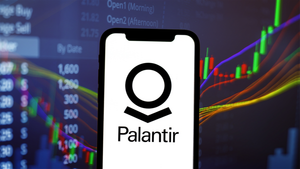
While gold and silver have captivated investors with their impressive rallies, another precious metal, palladium, has largely languished in their shadow. After a dramatic ascent to record highs in early 2022, palladium experienced a sharp decline, leading many to question its future. However, a growing chorus of analysts suggests that this industrial workhorse might be on the cusp of a significant breakout, driven by resurgent industrial demand and tightening supply dynamics. This potential turnaround could have profound implications for the broader precious metals market and the industries that rely on this critical element.
The Curious Case of Palladium: Underperformance Amidst Soaring Peers
Palladium's journey has been a rollercoaster. After reaching an all-time high of over $3,400 per troy ounce in March 2022, fueled by fears of supply disruptions from major producer Russia following its invasion of Ukraine, the metal's price plummeted through 2023. It recorded a nearly 40% loss since January 1, 2022, a stark contrast to the strong performance of gold and silver during the same period. This underperformance can be attributed to several converging factors.
Initially, the easing of geopolitical tensions and the lack of severe, sustained sanctions on Russian palladium exports mitigated the immediate supply crisis. Simultaneously, the extremely high prices in 2022 prompted automotive manufacturers, the primary consumers of palladium, to accelerate the substitution of palladium with its cheaper sister metal, platinum, in catalytic converters. The long-term specter of electric vehicles (EVs), which do not require catalytic converters, also cast a shadow over future demand, despite a recent slowdown in EV adoption rates. Furthermore, forecasts of a market surplus, driven by increased recycling and stable output from major producers, contributed to the bearish sentiment. Palladium's relatively smaller and less liquid market also makes it prone to more volatile swings, amplifying both its rises and falls.
The Engine of Demand: How a Breakout Could Reshape the Market
A significant breakout in palladium prices would send ripples across various sectors, creating both winners and losers and reshaping market dynamics. The primary driver for such a surge lies in its indispensable role in industrial applications, particularly in automotive catalytic converters, which account for 80-85% of its global consumption.
Potential Winners:
- Palladium Mining Companies: Major producers stand to gain immensely. Companies like Russia's Nornickel, and South African giants such as Impala Platinum (JSE: IMP), Anglo American Platinum (JSE: AMS), Sibanye-Stillwater (NYSE: SBSW), and Northam Platinum (JSE: NPH) would see substantial increases in revenue and profitability. Their fortunes are directly tied to palladium's price trajectory.
- Automotive Recyclers: As palladium prices climb, the value of recycled catalytic converters skyrockets, making the recovery of the metal from end-of-life vehicles a highly lucrative business. This sector would experience a significant boost in profitability.
- Platinum Mining Companies: Counterintuitively, a sharp rise in palladium prices could also benefit platinum miners. If palladium becomes prohibitively expensive, the trend of "reverse substitution" – replacing palladium with platinum in catalytic converters – would intensify, driving up demand and prices for platinum. This could position platinum as an attractive alternative and a "catch-up trade" in the precious metals complex.
Potential Losers:
- Automotive Manufacturers: Companies heavily reliant on gasoline or hybrid vehicle production would face increased production costs due to higher palladium input prices. While some have diversified their catalytic converter strategies, those less agile in adapting could see squeezed profit margins.
- Electronics Manufacturers: Palladium is also used in various electronic components. Manufacturers in this sector could similarly experience increased material costs, potentially impacting their profitability or forcing them to seek alternative materials.
Broader Implications: A Catalyst for Change in the Precious Metals Landscape
A palladium breakout would not occur in isolation; its wider significance extends to broader industry trends, regulatory frameworks, and the intricate relationships within the precious metals complex. This event could signal a renewed vigor in traditional automotive sectors, even as the world transitions towards electrification.
The continued tightening of global emission regulations, particularly in major markets like Europe, China, and the United States, mandates the use of more palladium per vehicle to meet stringent standards. This regulatory push provides a fundamental demand floor for the metal, irrespective of broader economic cycles. Historically, palladium's price movements have been highly sensitive to supply-demand imbalances and geopolitical events. The early 2000s saw spikes due to supply fears, followed by drops when Russian stockpiles were released. The mid-2010s to 2020 witnessed a sustained rally driven by the shift towards gasoline vehicles post-dieselgate. The 2022 peak and subsequent decline illustrate its extreme sensitivity to both perceived and actual supply disruptions.
A significant surge in palladium prices could further solidify platinum's role as a viable and cost-effective alternative in industrial applications. This dynamic could lead to a re-evaluation of platinum's intrinsic value, potentially narrowing the historical discount it currently holds relative to gold, a relationship that reversed in 2011. Platinum's diversified demand base, including jewelry, diesel catalytic converters, and emerging hydrogen technologies, positions it well to capitalize on increased substitution. The inherent rarity of palladium, with annual production significantly lower than gold or even platinum, underpins its potential for sharp price swings and its high value.
What Comes Next: Navigating the Road Ahead for Palladium
The path forward for palladium is fraught with both opportunities and challenges, requiring close attention from investors and industry stakeholders. Several key factors will determine whether the current rebound evolves into a sustained breakout.
In the short term, potential supply constraints remain a significant catalyst. Geopolitical instability or labor strikes in major producing regions like Russia and South Africa could severely disrupt supply, leading to rapid price increases. Reports of nearly depleted above-ground palladium stocks suggest that any significant increase in demand or supply disruption would have an amplified effect on prices. A robust recovery in global vehicle sales, particularly for gasoline and hybrid models, would directly boost demand. Furthermore, an economic recovery in key regions, especially China, a net importer of palladium, would stimulate broader industrial activity and manufacturing, generally boosting demand for industrial metals.
Long-term prospects also hinge on technological advancements. While EVs pose a long-term threat, new applications for palladium in other industries or advancements in fuel cell technology could emerge as fresh demand drivers. The recent uptick in palladium prices in 2025, reaching a new 52-week high, has historically signaled potential for continued gains, attracting speculative activity. Investors should monitor global automotive production figures, economic indicators from major industrial economies, and any developments related to mining output or geopolitical events that could impact supply.
Conclusion: A Precious Metal at a Crossroads
Palladium's journey from record highs to underperformance and now to a potential breakout highlights its unique position within the precious metals market. Its fate is intrinsically linked to industrial demand, making it a bellwether for global manufacturing and environmental regulations. While the shadow of electric vehicles looms in the distant future, the immediate landscape suggests that palladium's critical role in pollution control, coupled with concentrated supply and the potential for renewed industrial growth, presents a compelling case for a significant price resurgence.
Investors should closely watch for signs of sustained automotive sector recovery, any new supply disruptions, and the evolving dynamics of platinum substitution. A breakout in palladium would not only reward its dedicated investors but also underscore the enduring importance of industrial precious metals in a world striving for cleaner air and economic growth. The coming months will be crucial in determining if palladium can truly shed its underperforming label and reclaim its position as a shining star in the precious metals firmament.
This content is intended for informational purposes only and is not financial advice




